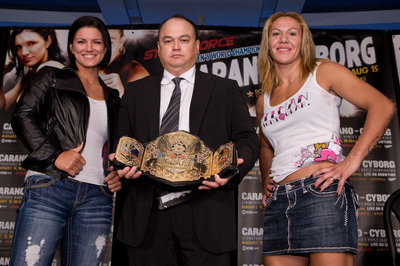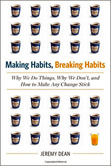
Former Strikeforce CEO Scott Coker has replaced now former Bellator MMA CEO Bjorn Rebney, and the promotion also plans to move away from its longstanding tournament format.
The Bjorn Rebney era in Bellator might be soon coming to an end.
According to sources with knowledge of the situation, Viacom executives, the majority owner of Bellator MMA, informed Rebney, the founder and CEO of the promotion, earlier this week in New York that they are working towards replacing him with former Strikeforce CEO and founder Scott Coker. Josh Gross first reported the news early Wednesday morning.
The early plan was to announce the move later this week, perhaps as early as Wednesday, however, according to one source who spoke on the condition of anonymity, "the fight is on." In other words, Rebney, who founded Bellator in 2007, isn't ceding control easily.
Coker was not available to comment on the news.
It had long been rumored that Viacom executives and Rebney did not see eye-to-eye on the future of Bellator and were looking to making a change. Once Coker's contract and non-compete clause with Zuffa, who purchased Strikeforce in 2011, expired in March, the wheels were in motion to bring him on board.
Viacom purchased a majority stake of Bellator in late 2011 after the UFC signed a new seven-year broadcast deal with the FOX Broadcasting Company. Bellator debuted on Spike TV, which is owned by Viacom, in early Jan. 2013.
According to a Bellator press kit, Rebney, a former boxing promoter, "spent all his savings and put a second, then a third mortgage on his house" to launch the fight promotion seven years ago, however, it was only when Connecticut-based hedge fund Plainfield Asset Management decided to invest in "the mid-tens of millions" that the promotion was officially born in 2008. The organization's first event was held on April 3, 2009.
With Rebney leading the way as the face of the promotion, Bellator's first season aired on ESPN Deportes. The promotion later moved to FOX Sports Net, MTV2 and finally Spike TV. When the media giant Viacom purchased a majority stake of the company in Oct. 2011, Rebney was part of the deal. Tim Danaher, the former VP of Plainfield Asset Management, who spearheaded the initial move to invest in the company six years ago, left to become Bellator president in 2010. It is unclear at this time whether he would remain on board or not and whether Coker would bring in his own staff to run the promotion behind the scenes. Bellator's next event -- its 122nd -- is scheduled for July 25.
Coker launched Strikeforce in 1985 as a kickboxing promotion. Once California legalized the sport in 2005, Coker began promoting MMA in 2006, with the first event taking place on March 10, 2006 in front of 18,625 fans at the HP Pavilion in San Jose, Calif. The San Jose-based promotion signed with Showtime in Feb. 2009 and started to develop some momentum as the legitimate No. 2 MMA promotion behind the UFC. However, in a shocking turn of events, Zuffa purchased the promotion from its parent company, Silicon Valley Sports & Entertainment, in March 2011 before closing its doors in Jan. 2013. Once that happened, Coker was hardly seen or heard from in MMA, until his contract with the UFC expired three months ago.
It remains to be seen whether Rebney will be successful in fighting off the move, but if Viacom has its way, Coker will be introduced as the new face of Bellator sooner rather than later.





















